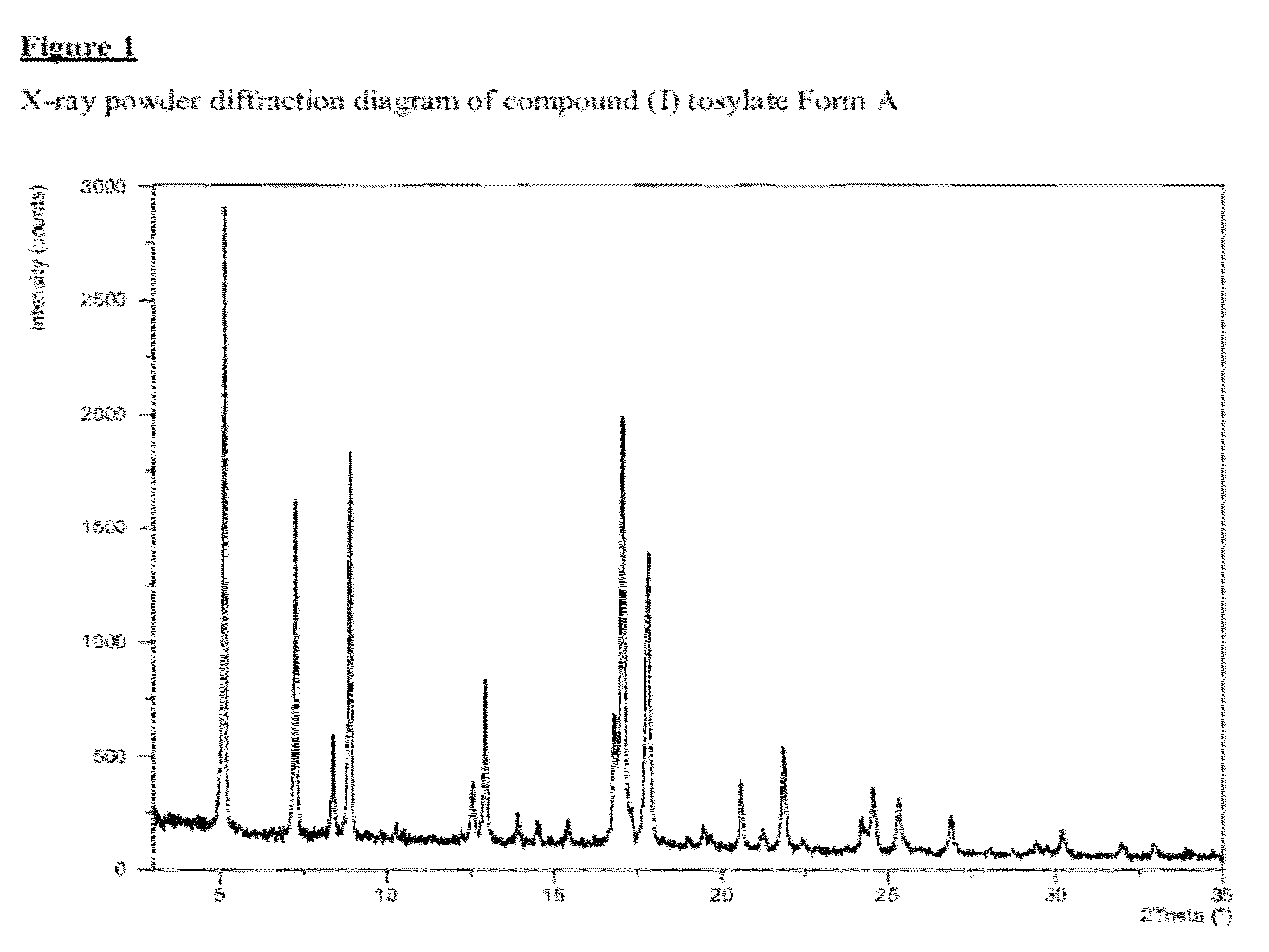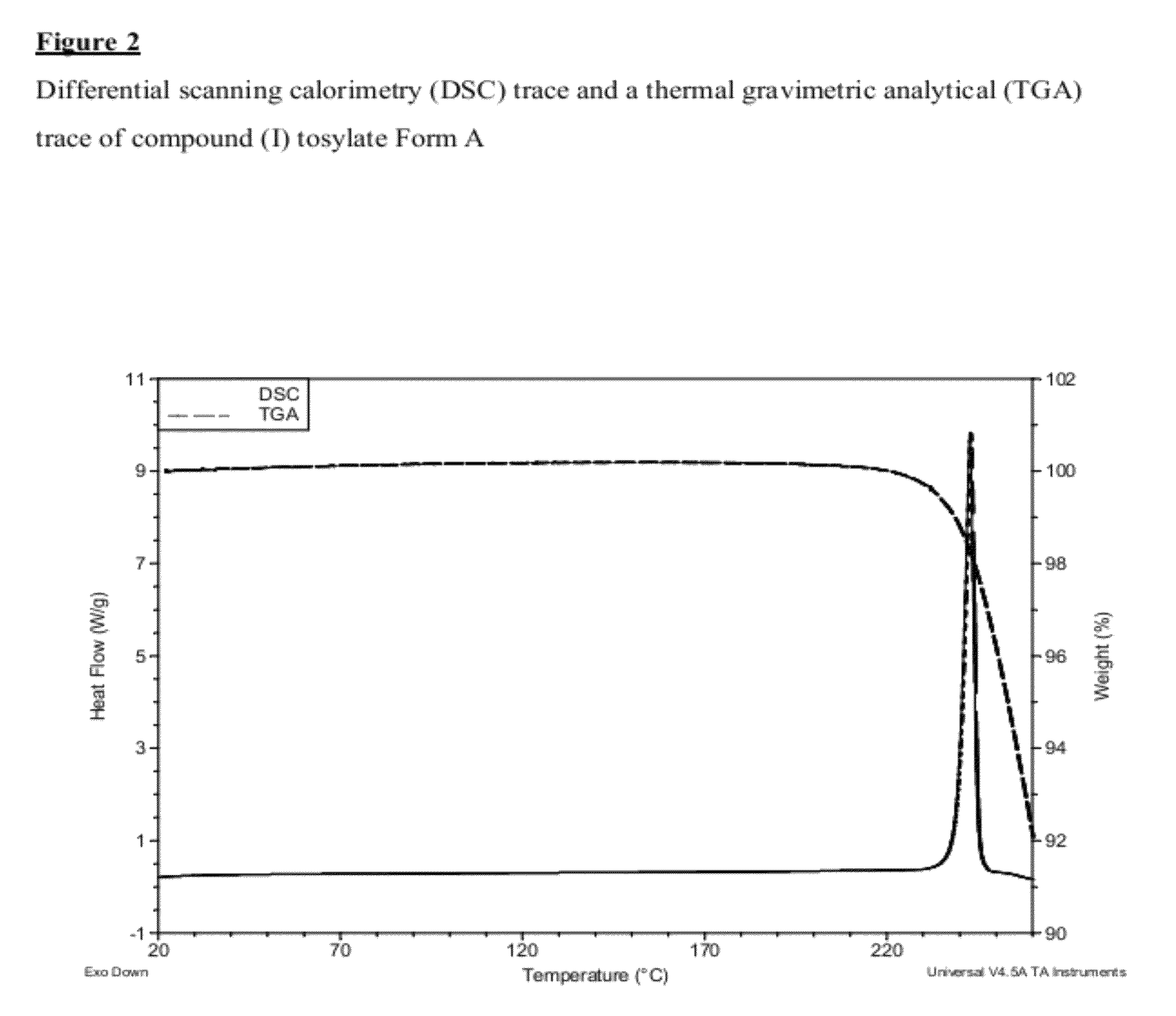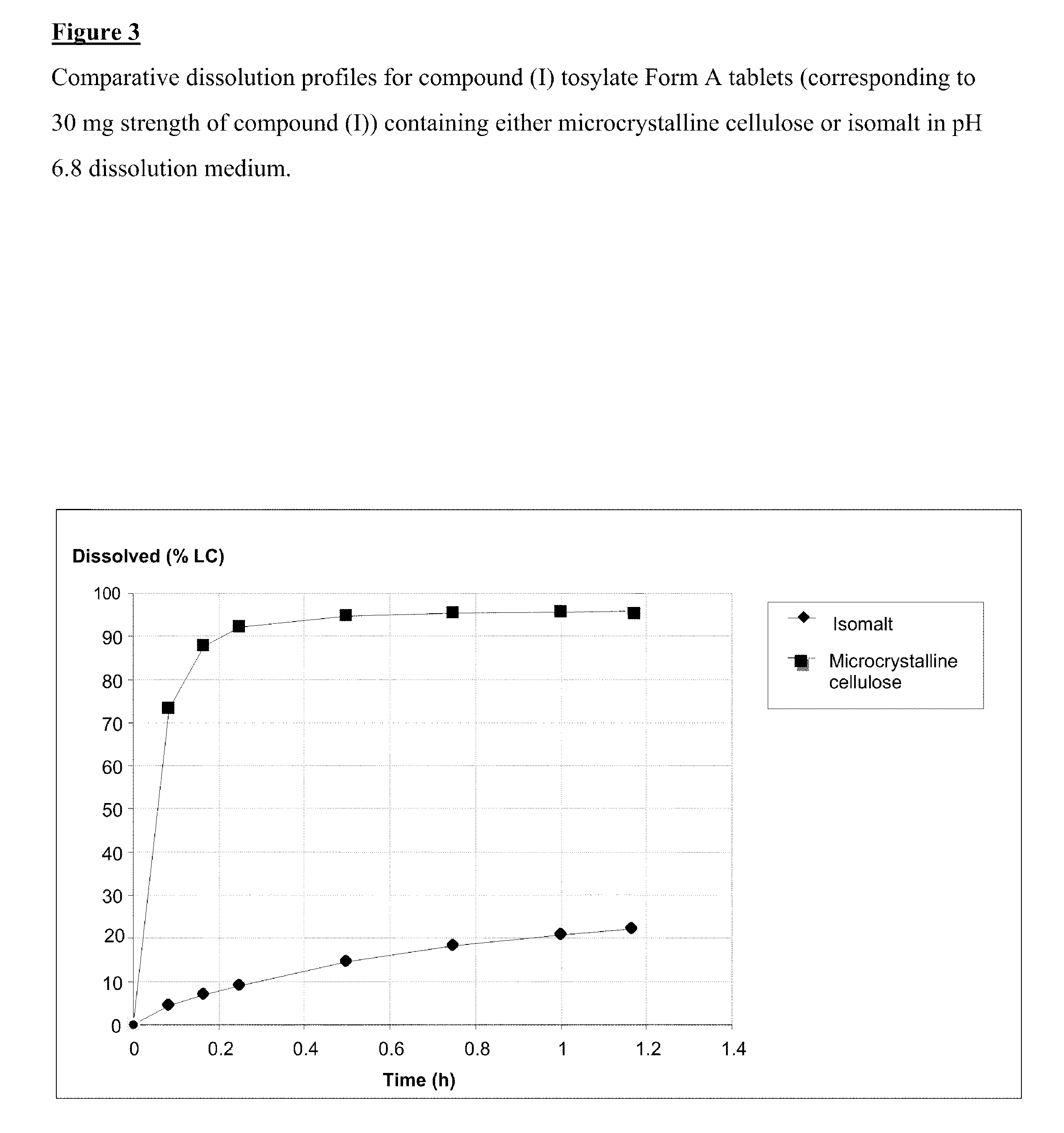Salt 628
a technology of salt and salt, applied in the field of salt 628, can solve the problems of poor soluble free base and limited solubility, and achieve the effect of rapid intrinsic dissolution rate and high transient solubility
- Summary
- Abstract
- Description
- Claims
- Application Information
AI Technical Summary
Benefits of technology
Problems solved by technology
Method used
Image
Examples
example 1
Methyl 3-oxo-3-(3-(trifluoromethyl)phenylamino)propanoate
[0279]
[0280]Sodium hydrogen carbonate (26.0 kg, 1.7 mol eq) was charged followed by acetone (58.6 L, 2 rel vol). 3-(Trifluoromethyl)aniline (29.3 kg, 1 mol eq, limiting reagent) was charged followed by addition of acetone (14.7 L, 0.5 rel vol) and the mixture cooled to 0° C. Methyl malonyl chloride (25.8 kg, 1.05 mol eq) was diluted with acetone (29.3 L, 1 rel vol) and charged maintaining the temperature below 20° C. An acetone line rinse (14.7 L, 0.5 rel vol) was charged and the reaction mixture was stirred until HPLC confirmed the reaction to be complete. Water (293 L, 10 rel vol) was then charged and acetone was removed by distillation. The reaction was then cooled to 20° C. A further portion of water was added (171.2 L, 4 rel vol) and the reaction was stirred to precipitate out the product. The solid was isolated by filtration, washed twice with water (2×58.6 L, 2×2 rel vol), once with iso-hexane (146.5 L, 5 rel vol) and d...
example 1a
Alternative Preparation of methyl 3-oxo-3-(3-(trifluoromethyl)phenylamino)propanoate
[0281]Sodium hydrogen carbonate (36.3 kg, 1.7 mol eq) was charged followed by iso-propylacetate (102.5 L, 2.5 rel vol). 3-(trifluoromethyl)aniline (41.0 kg, 1 mol eq, limiting reagent) charged followed by a line rinse of iso-propylacetate (20.5 L, 0.5 rel vol). The reaction was cooled to 5° C.-10° C. Methyl malonyl chloride (36.5 kg, 1.05 mol eq) was charged maintaining the temperature below 10° C. followed by a line rinse of iso-propylacetate (10.3 L, 0.25 rel vol). The mixture was stirred until the reaction was complete as judged by HPLC. The temperature was adjusted to 20° C. and further iso-propylacetate (71.8 L, 1.75 rel vol) charged followed by water (205 L, 5 rel vol). The layers were separated & the organic layer further extracted with brine (41 L, 1 rel vol). The solvent was swapped from iso-propylacetate to cyclohexane by reduced pressure distillation. Following seeding, cooling to 5° C. an...
example 2
[0282]
6-Methyl-2-oxo-1-[3-(trifluoromethyl)phenyl]-1,2-dihydropyridine-3-carboxylic acid
[0283]Methyl 3-oxo-3-(3-(trifluoromethyl)phenylamino)propanoate (39.5 kg, 1 mol eq, limiting reagent) was dissolved in ethanol (197.5 L, 5.0 rel vol). Sodium methoxide solution in methanol (74.6 kg, 25% w / w, 2.3 mol eq) was charged followed by an ethanol line wash (11.9 L, 0.3 rel vol). trans-4-Methoxy-3-buten-2-one (19.2 kg, 1.2 mol eq) in ethanol (26.5 L, 0.67 rel vol) was charged. The reaction was heated to 65° C. and stirred at this temperature until the reaction was deemed complete as judged by HPLC analysis. Water (67.2 L, 1.7 rel vol) and 2 M aqueous sodium hydroxide (29.6 L, 0.75 rel vol) were then added and the reaction mixture was stirred for 1 hour. To the solution was added 8 M aqueous hydrochloric acid (237.0 L, 6 rel vol) and the mixture stirred for a further 1 hour. The solution was cooled, stirred and isolated by filtration. The solid was washed with water (79.2 L, 2 rel vol) and ...
PUM
| Property | Measurement | Unit |
|---|---|---|
| 2θ | aaaaa | aaaaa |
| 2θ | aaaaa | aaaaa |
| 2θ | aaaaa | aaaaa |
Abstract
Description
Claims
Application Information
 Login to View More
Login to View More - R&D
- Intellectual Property
- Life Sciences
- Materials
- Tech Scout
- Unparalleled Data Quality
- Higher Quality Content
- 60% Fewer Hallucinations
Browse by: Latest US Patents, China's latest patents, Technical Efficacy Thesaurus, Application Domain, Technology Topic, Popular Technical Reports.
© 2025 PatSnap. All rights reserved.Legal|Privacy policy|Modern Slavery Act Transparency Statement|Sitemap|About US| Contact US: help@patsnap.com



